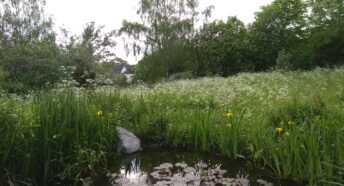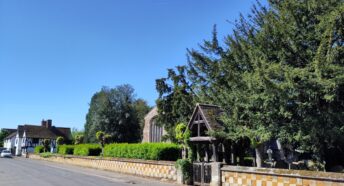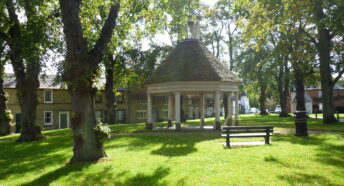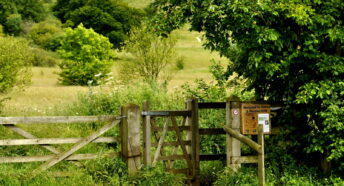Discover: Bedfordshire’s literary landscapes
We spotlight six of Bedfordshire’s literary connections, from the famous to the less well known.
From Bunyan to The Borrowers, there’s something for every kind of reader to enjoy.
John Donne – Blunham
John Donne was born in 1572 in London. As a writer he is best known for his sermons and poetry. However, he was also a trained lawyer, an MP, the Dean of St Paul’s Cathedral and naval adventurer. He came from a Roman Catholic family that faced religious persecution due to the political atmosphere of the time. He abandoned his Catholic faith, eventually becoming an Anglican Priest. His association with Bedfordshire dates from 1621 when he became Rector of Blunham. He was an absentee rector, engaging a curate to minister to the congregation. He was more contentious than many absent rectors though and visited the village each summer, preaching several sermons during his stays.
Explore
The Church of St Edmund or St James in Blunham is still an active parish church. A walk round the village will reveal some lovely historic buildings and a small nature reserve known as ‘Blunham Marshes’ is a haven for wildlife. The river Ivel flows through the village so you can pick up the Kingfisher Way walk.
John Bunyan – Bedfordshire’s long-distance path
John Bunyan is the writer most closely associated with Bedfordshire. ‘The Pilgrim’s Progress’ was published in 1678 and has never been out of print since. It’s a piece of theological fiction which uses allegory to explain Bunyan’s vision of the Christian journey through life. Bunyan was imprisoned for his non-conformist beliefs and became a popular local preacher. Before this he was an itinerant tinker, mending pans and other metal utensils, and would have been familiar with many of Bedfordshire’s paths and byways.
Explore
The John Bunyan Museum in Bedford is the perfect place to learn more about Bunyan, his life and works. There are lots of locations associated with ‘The Pilgrims Progress’ including the Great Ouse in Bedford where he was baptised), Houghton House (House Beautiful) and Elstow Green & Moot Hall (Vanity Fair). The John Bunyan Trail is a long-distance walk of around 86 miles which takes in places connected with his life and books.
John Bunyan Trail Booklet (PDF)
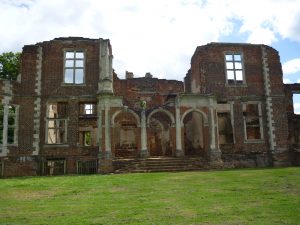
Robert Bloomfield – Shefford & Campton
Robert Bloomfield lived in Shefford in his last decade and is buried in the graveyard of Campton Church. He was born in Suffolk and apprenticed to a farmer but was too frail for the manual work. He turned to writing poetry concerned with rural themes. His most famous collection was ‘The Farmer’s Boy’ which was published in 1800. He moved from London to Shefford in 1812 as his health was poor and continued to write, although the poetry from this period was only published posthumously.
Explore
Shefford Town Council have devised a town trail which takes in locations associated with Bloomfield as well as many other historical features. There are also several walks around Campton where he is buried, if you want a more rural stroll.
Mark Rutherford – Bedford
Mark Rutherford was the pen name of WIlliam Hale White. He was born in Bedford in 1831, his father was a printer and bookseller with a strong interest in Dissenting politics. He attended Bedford Modern School before training as an Independent minister and joining the Civil Service as a clerk. In his 50s he began to publish fiction, including two autobiographical novels, philosophy, literary criticism and newspaper articles. His experience of growing up in Bedford, particularly his membership of the John Bunyan Meeting and his family’s non-conformity, shaped his fiction. He died in 1913.
Explore
The Bedfordshire Heritage Library at Bedford Central Library holds his correspondence as well as articles and pamphlets written by him. There are also newspaper cuttings about the author. There is a plaque marking his birthplace at 3 High Street in Bedford. A self guided trail of Bedford includes buildings that date from the period as well as exploring other parts of the town’s history.
Bedford Self Guided Walk (PDF)
Mary Norton – Leighton Buzzard
The author Mary Norton lived in Leighton Buzzard as a child. She set ‘The Borrowers’ (published in 1952) in the Georgian Manor House, now Leighton Middle School. The popular children’s series features a family of miniature people who live under the floors and behind the walls of a country house. In later books they move into other locations for their adventures. She worked in the War Office from 1940 and turned to writing when the family moved temporarily to the USA. Two of her novels were adapted to make the 1971 Disney film ‘Bedknobs and Broomsticks’.
Explore
The Leighton–Linslade Children’s Trail is a public trail of 22 artworks celebrating children’s stories. It is partly inspired by the books of Mary Norton.
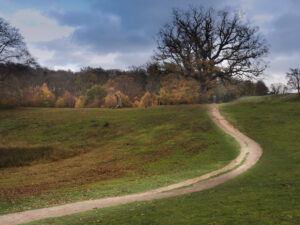
Kit Williams – Ampthill
The children’s book ‘Masquerade’ was published in 1979. Created by author and artist Kit Williams, it held a series of puzzles and riddles which would lead the successful reader to a golden hare jewel. The jewel was eventually discovered to be buried in Ampthill Great Park, close to Katherine’s Cross. Thousands of people took up the challenge and the hare was eventually found 18 months later.
Explore
Katherine’s Cross commemorates the imprisonment of Katherine of Aragon at Ampthill Castle. It was erected in 1773 as a garden feature in ‘Capability’ Brown’s new parkland landscape. There are plenty of footpaths in Ampthill Park, as well as three walking trails.




